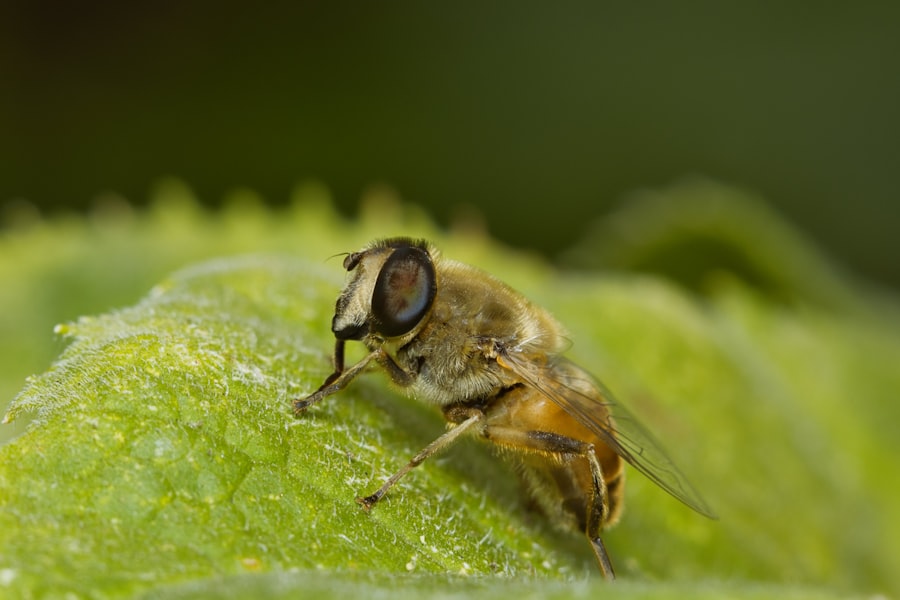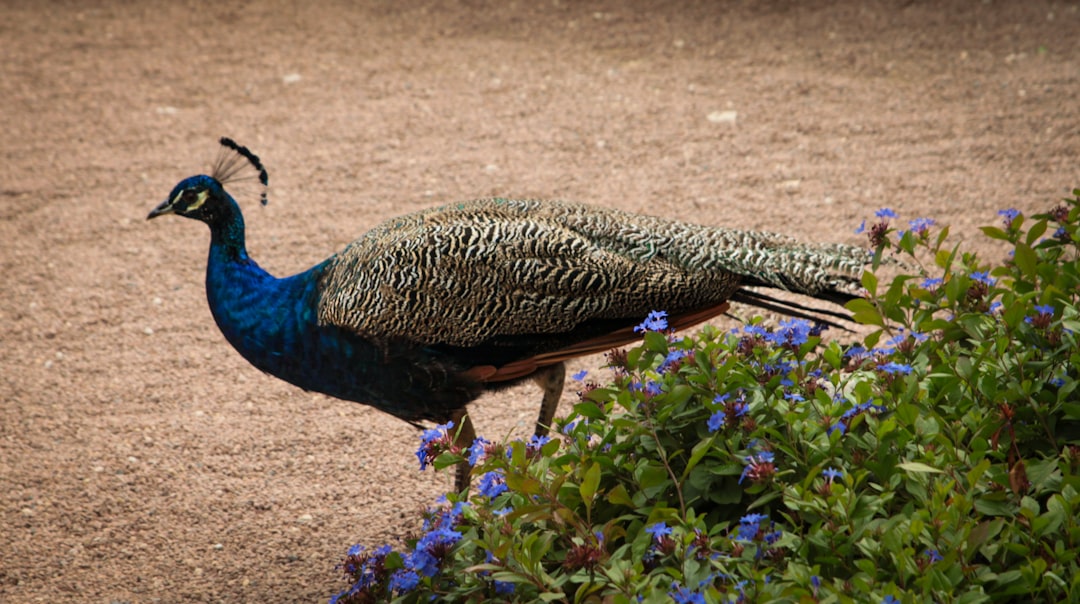Praying mantises are fascinating insects that belong to the order Mantodea, which encompasses over 2,400 species worldwide. These predatory insects are easily recognizable due to their unique posture, where they hold their forelegs in a position that resembles prayer, hence the name “praying mantis.” Their triangular heads, large compound eyes, and elongated bodies contribute to their distinctive appearance. Praying mantises are not only intriguing from a biological standpoint but also play a crucial role in maintaining ecological balance.
They are voracious predators, feeding on a variety of pests, including aphids, caterpillars, and even other insects, making them valuable allies for gardeners and farmers alike. The life cycle of a praying mantis is equally captivating. They undergo incomplete metamorphosis, which includes three stages: egg, nymph, and adult.
The female mantis lays eggs in a protective case called an ootheca, which can contain dozens to hundreds of eggs. Once the eggs hatch, the nymphs emerge and resemble miniature adults, gradually growing and molting until they reach maturity. This fascinating life cycle not only highlights the adaptability of praying mantises but also underscores their importance in pest control within various ecosystems.
Key Takeaways
- Praying mantises are beneficial insects that can help control pest populations in the garden.
- Creating an ideal habitat for praying mantises involves providing shelter, water sources, and choosing the right plants to attract them.
- Pesticide-free practices and companion planting can help attract praying mantises to the garden.
- Avoiding harmful chemicals that repel praying mantises is important for maintaining a praying mantis-friendly garden.
- Observing and monitoring praying mantises in the garden can help maintain a healthy and balanced ecosystem.
Understanding the Benefits of Praying Mantises in the Garden
Effective Pest Control
A single praying mantis can consume up to 100 pests in a week, making them highly effective at keeping populations of aphids and caterpillars in check.
Enhanced Biodiversity
The presence of praying mantises can enhance biodiversity within the garden. By attracting these beneficial insects, gardeners can create a more balanced ecosystem that supports various forms of life.
Aesthetic Appeal
This diversity can lead to improved pollination rates and healthier plants overall. Additionally, the visual appeal of praying mantises adds an element of intrigue to gardens, as their unique behaviors and hunting techniques can be fascinating to observe for both adults and children alike.
Creating the Ideal Habitat for Praying Mantises

To attract and sustain a population of praying mantises in your garden, it is essential to create an ideal habitat that meets their needs. Praying mantises thrive in environments that offer ample food sources, shelter, and suitable microclimates. One effective way to establish such a habitat is by incorporating a variety of plants that provide both food and cover.
Native plants are particularly beneficial as they support local insect populations, which serve as prey for mantises. In addition to plant diversity, maintaining a healthy garden ecosystem is crucial. This includes avoiding practices that disrupt the natural balance, such as excessive tilling or monoculture planting.
Instead, consider implementing permaculture principles that promote soil health and biodiversity. By creating a thriving environment with diverse plant life and minimal disturbance, you can encourage praying mantises to take up residence in your garden.
Choosing the Right Plants to Attract Praying Mantises
Selecting the right plants is vital for attracting praying mantises and ensuring their survival in your garden. A mix of flowering plants and foliage can provide both food sources for prey insects and suitable perches for mantises to hunt from. Plants such as dill, fennel, and yarrow are excellent choices as they attract various beneficial insects while also providing cover for mantises.
In addition to these flowering plants, incorporating taller grasses and shrubs can create vertical layers within the garden that offer additional shelter. This layered approach not only provides hiding spots for mantises but also encourages a diverse insect population that can serve as food sources. By carefully selecting plants that support both mantises and their prey, gardeners can create a thriving ecosystem that benefits all inhabitants.
Providing Shelter and Protection for Praying Mantises
Shelter is a critical component of a successful habitat for praying mantises. These insects require places to hide from predators and harsh weather conditions. Dense foliage, tall grasses, and shrubs can provide excellent cover for mantises as they hunt or rest.
Additionally, incorporating structures such as rocks or logs can create microhabitats that offer protection from environmental stressors.
Creating a diverse landscape with varying heights and densities of vegetation will not only benefit praying mantises but also other beneficial insects and wildlife.
For example, planting ground covers alongside taller plants can create a multi-layered environment that supports various species.
This diversity enhances the overall resilience of the garden ecosystem while providing essential shelter for mantises.
Using Pesticide-Free Practices to Attract Praying Mantises

One of the most effective ways to attract and maintain a population of praying mantises is by adopting pesticide-free gardening practices. Chemical pesticides can be detrimental not only to target pests but also to beneficial insects like mantises. By avoiding synthetic chemicals and opting for organic pest control methods, gardeners can create a safe environment for these valuable predators.
Natural pest management techniques include introducing beneficial insects such as ladybugs or lacewings, using insecticidal soaps or neem oil for targeted treatments, and employing physical barriers like row covers to protect plants from pests. These methods not only minimize harm to praying mantises but also promote a healthier garden ecosystem overall. By prioritizing organic practices, gardeners can foster an environment where praying mantises can thrive.
Incorporating Water Sources for Praying Mantises
Water is an essential resource for all living organisms, including praying mantises. While they do not require large bodies of water, providing small water sources can significantly enhance their habitat. Shallow dishes filled with water or small birdbaths can serve as drinking spots for mantises while also attracting other beneficial insects.
When incorporating water sources into your garden, it is crucial to ensure they are safe for all wildlife. Avoid using chemicals or treatments that could contaminate the water supply. Additionally, consider adding pebbles or stones to shallow dishes to provide landing spots for insects while preventing drowning risks.
By creating accessible water sources, gardeners can further support the health and well-being of praying mantises in their gardens.
Utilizing Companion Planting to Attract Praying Mantises
Companion planting is an effective strategy for attracting praying mantises while simultaneously enhancing plant health and productivity. This practice involves planting different species together in ways that benefit one another—whether through pest control, improved growth rates, or enhanced flavor profiles. Certain plants naturally attract beneficial insects that serve as prey for praying mantises.
For example, planting marigolds alongside vegetables can deter harmful pests while attracting beneficial insects like aphids or whiteflies that serve as food for mantises. Similarly, herbs such as basil or cilantro can attract pollinators and other beneficial insects that contribute to a balanced ecosystem. By strategically pairing plants in your garden, you can create an inviting environment for praying mantises while promoting overall plant health.
Avoiding Harmful Chemicals that Repel Praying Mantises
While it is essential to attract praying mantises to your garden, it is equally important to avoid using harmful chemicals that may repel them or disrupt their populations. Many common pesticides contain ingredients that are toxic not only to target pests but also to beneficial insects like mantises. For instance, neonicotinoids are known to have detrimental effects on various insect species and should be avoided in gardens aiming to support biodiversity.
Instead of relying on chemical solutions, consider using integrated pest management (IPM) strategies that focus on prevention and natural control methods. This approach emphasizes monitoring pest populations and implementing targeted interventions when necessary while minimizing harm to beneficial insects. By avoiding harmful chemicals and adopting IPM practices, gardeners can create a welcoming environment for praying mantises.
Observing and Monitoring Praying Mantises in the Garden
Observing praying mantises in your garden can be an enriching experience that deepens your understanding of these remarkable insects and their role in the ecosystem. Regular monitoring allows gardeners to assess the health of their mantis population while also providing opportunities for education and engagement with nature. Observing their hunting behaviors—such as their remarkable ability to camouflage themselves among foliage—can be both entertaining and informative.
Keeping a journal or log of your observations can help track changes in the population over time and identify any potential issues affecting their presence in your garden.
Noting the types of prey they capture or any signs of mating behavior can provide valuable insights into their life cycle and habits. Engaging with local entomology groups or online communities dedicated to insect observation can further enhance your knowledge and appreciation of these fascinating creatures.
Conclusion and Tips for Maintaining a Praying Mantis-Friendly Garden
Creating a garden that supports praying mantises requires thoughtful planning and ongoing care. By focusing on biodiversity through plant selection, providing adequate shelter and water sources, and avoiding harmful chemicals, gardeners can cultivate an environment where these beneficial predators thrive. Regular observation allows for adjustments based on changing conditions while fostering a deeper connection with nature.
In addition to these practices, consider sharing your experiences with others interested in promoting biodiversity in their gardens. Educating friends and family about the importance of praying mantises can inspire collective efforts toward creating healthier ecosystems in local communities. By working together to support these remarkable insects, we contribute not only to our gardens but also to the broader environmental health of our planet.
If you are interested in attracting beneficial insects like praying mantises to your garden, you may also want to learn about preventing blossom end rot in your plants. This article on preventing blossom end rot provides valuable tips for maintaining healthy plants and ensuring a successful garden. By taking steps to prevent common plant diseases, you can create a thriving environment that attracts a variety of beneficial insects, including praying mantises.
FAQs
What is a praying mantis?
A praying mantis is an insect known for its distinctive appearance, with long bodies and legs, and large, grasping forelegs that are used for catching prey.
Why would I want to attract a praying mantis to my garden?
Praying mantises are beneficial insects that can help control pest populations in the garden, such as aphids, flies, and caterpillars.
How can I attract a praying mantis to my garden?
You can attract praying mantises to your garden by planting a variety of flowering plants and herbs, providing a water source, and avoiding the use of chemical pesticides.
What do praying mantises eat?
Praying mantises are carnivorous and feed on a variety of insects, including moths, crickets, flies, and other small arthropods.
Are praying mantises harmful to humans or pets?
Praying mantises are not harmful to humans or pets. They are beneficial insects that can help control pest populations in the garden.
How do praying mantises reproduce?
Praying mantises reproduce through sexual reproduction, with the female laying eggs in a frothy mass called an ootheca. The eggs hatch in the spring, and the young mantises emerge as nymphs.

